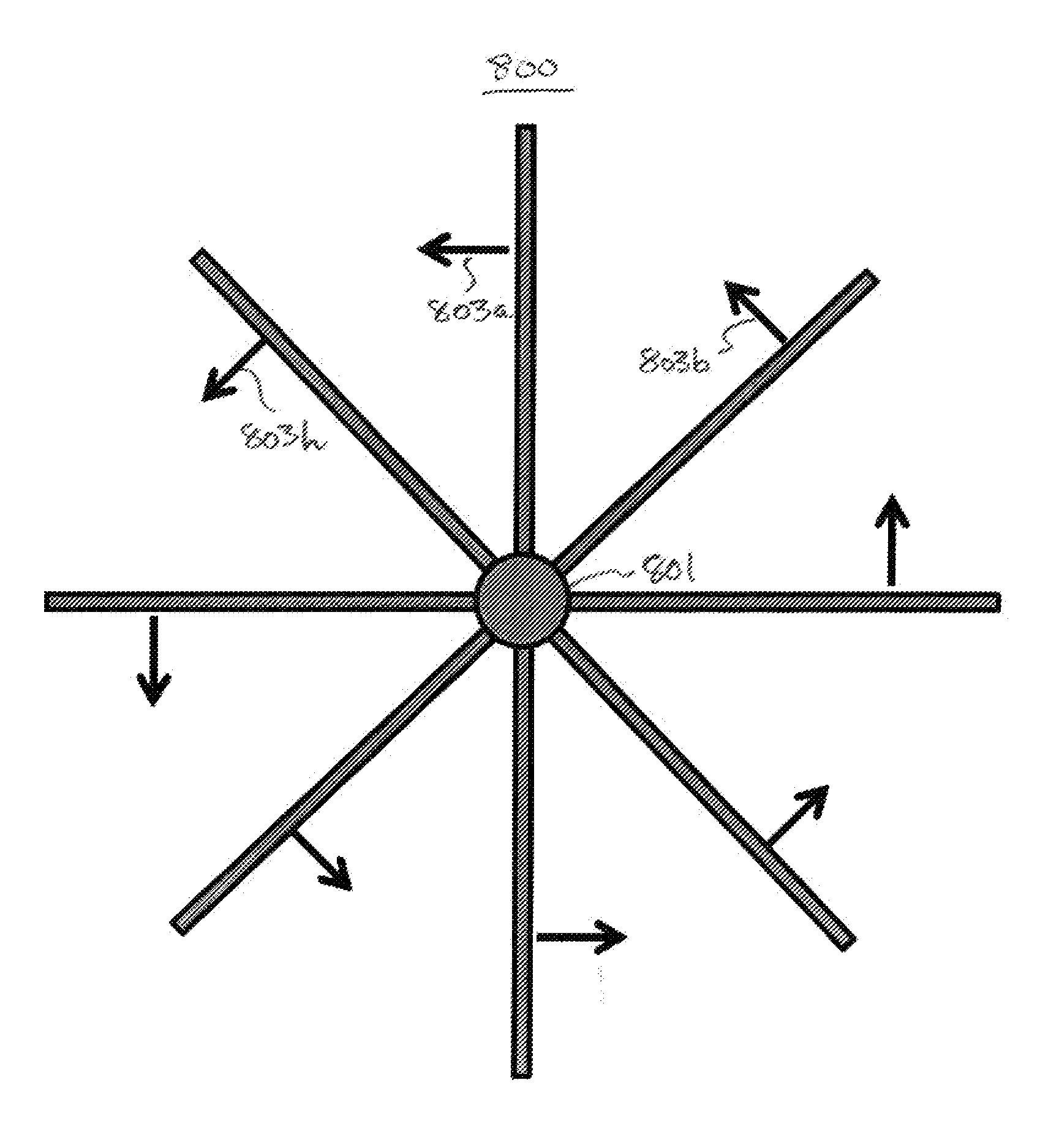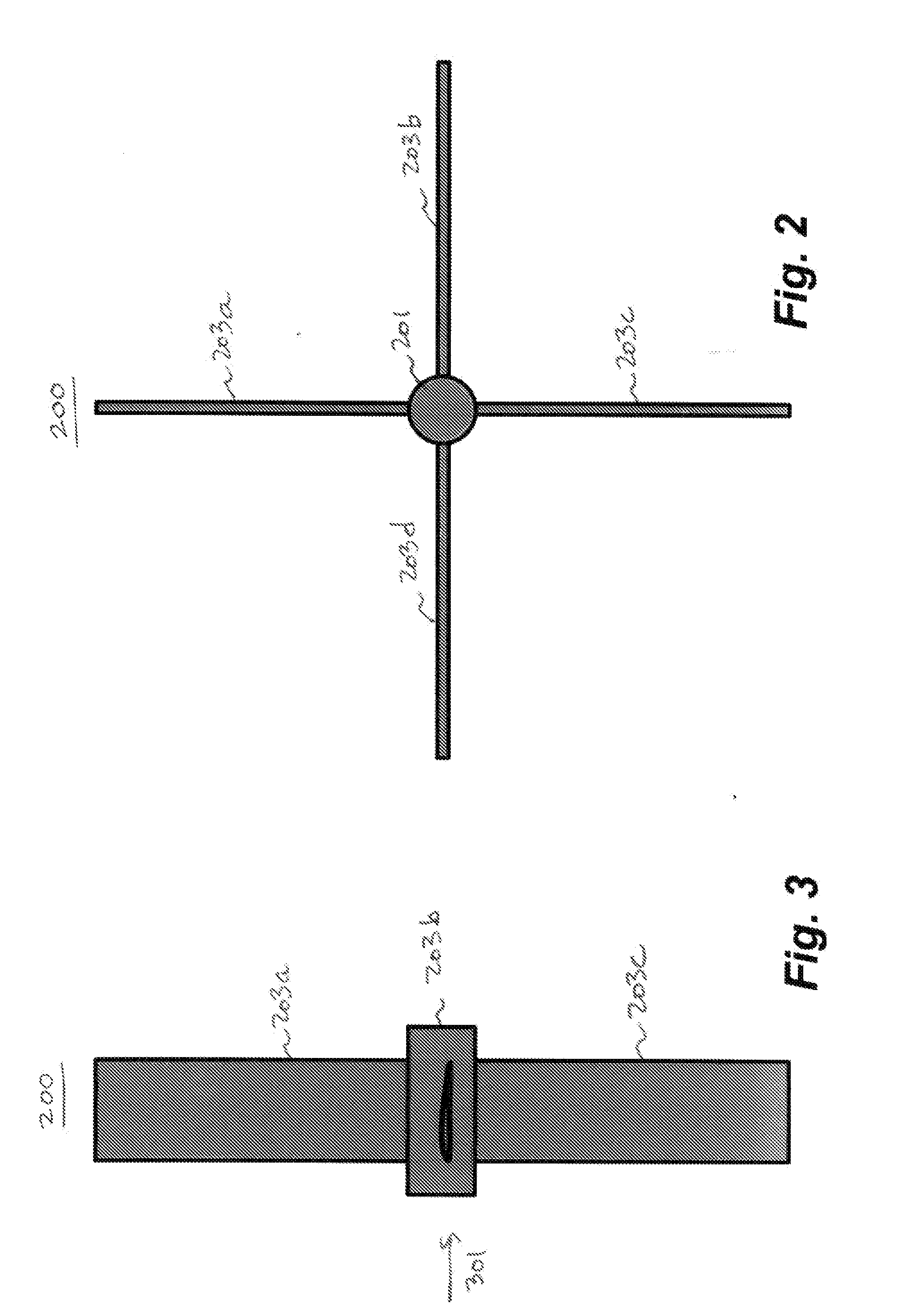Wind turbine having flow-aligned blades
a technology of flow-aligned blades and wind turbines, which is applied in the direction of wind motors, wind motor control, reaction engines, etc., can solve the problems of high turbine rotation rate, and the assumption underlying the foregoing design approach is open to question
- Summary
- Abstract
- Description
- Claims
- Application Information
AI Technical Summary
Benefits of technology
Problems solved by technology
Method used
Image
Examples
Embodiment Construction
[0037]Summary
[0038]The present turbine rotor blade design satisfies the following objectives:[0039]1. A turbine rotor (blades around a shaft) which can provide constant torque irrespective of the wind speed[0040]2. Consistent energy conversion at all wind speeds, or operating fluid speeds[0041]3. Slow rotation: No safety problem from fast turbine rotation[0042]4. Low noise from blade vortex turbulence[0043]5. Simplified control to lower cost
[0044]One principal objective is to have the lift force from the blade airfoil always be normal to the shaft torque. This condition necessarily maximizes energy conversion. This objective may be achieved by a) having the airfoil chord always aligned to the actual wind (operating fluid) direction, subject only to small angle of attack variations, and b) slowing the turbine rotation rate so that no blade twist is needed. As a result, blade tip speed due to shaft rotation is less than the wind (operating fluid) speed, and preferably much less. That ...
PUM
 Login to View More
Login to View More Abstract
Description
Claims
Application Information
 Login to View More
Login to View More - R&D
- Intellectual Property
- Life Sciences
- Materials
- Tech Scout
- Unparalleled Data Quality
- Higher Quality Content
- 60% Fewer Hallucinations
Browse by: Latest US Patents, China's latest patents, Technical Efficacy Thesaurus, Application Domain, Technology Topic, Popular Technical Reports.
© 2025 PatSnap. All rights reserved.Legal|Privacy policy|Modern Slavery Act Transparency Statement|Sitemap|About US| Contact US: help@patsnap.com



